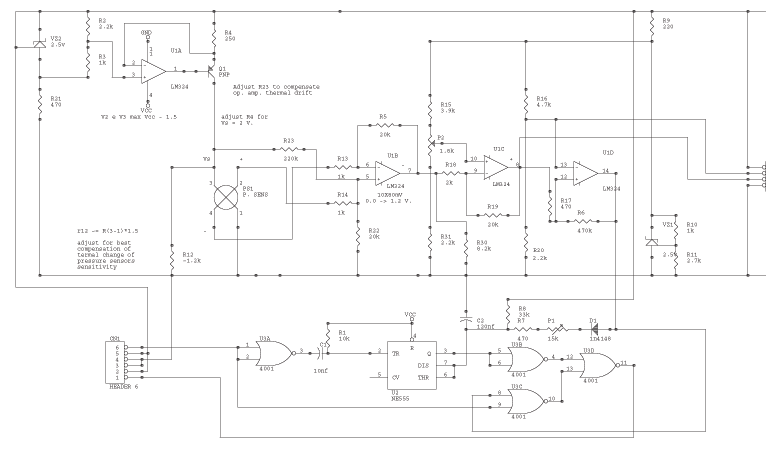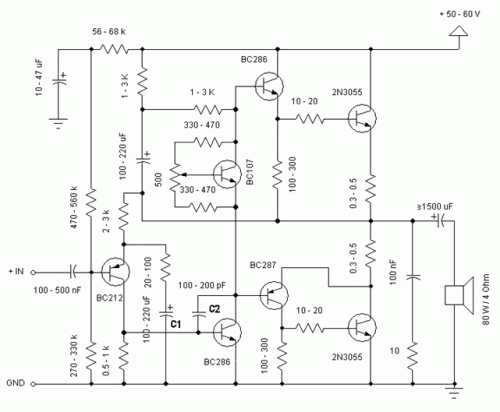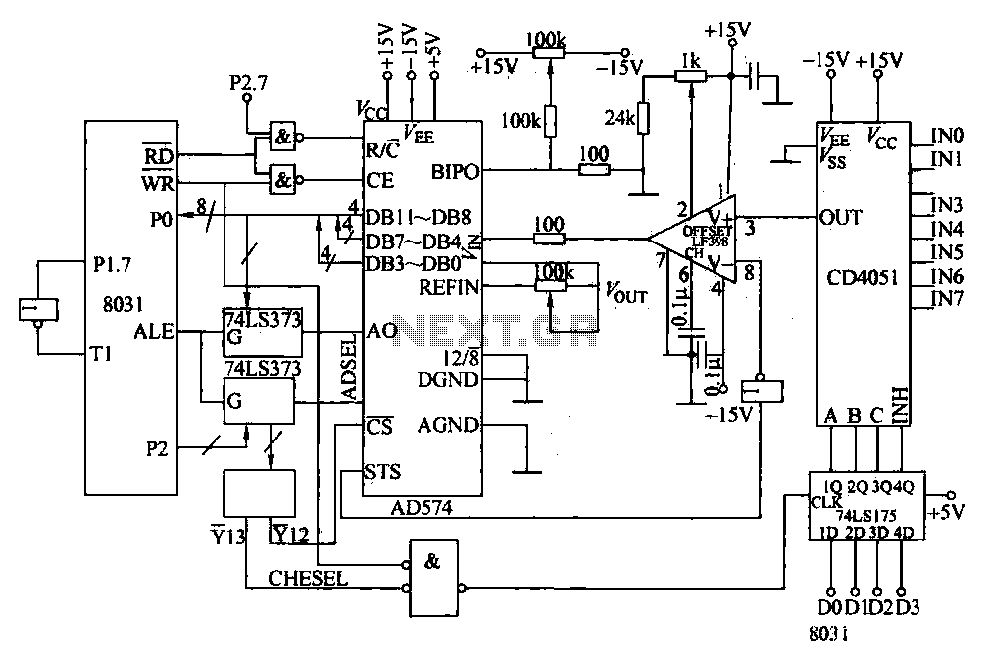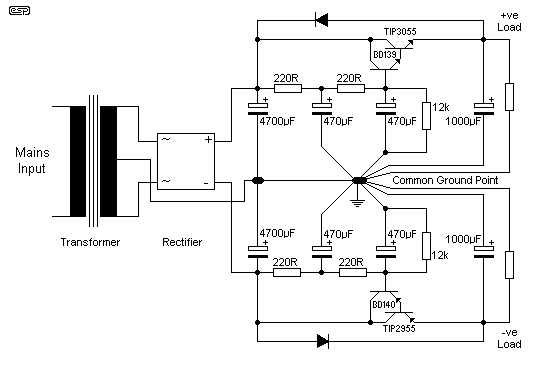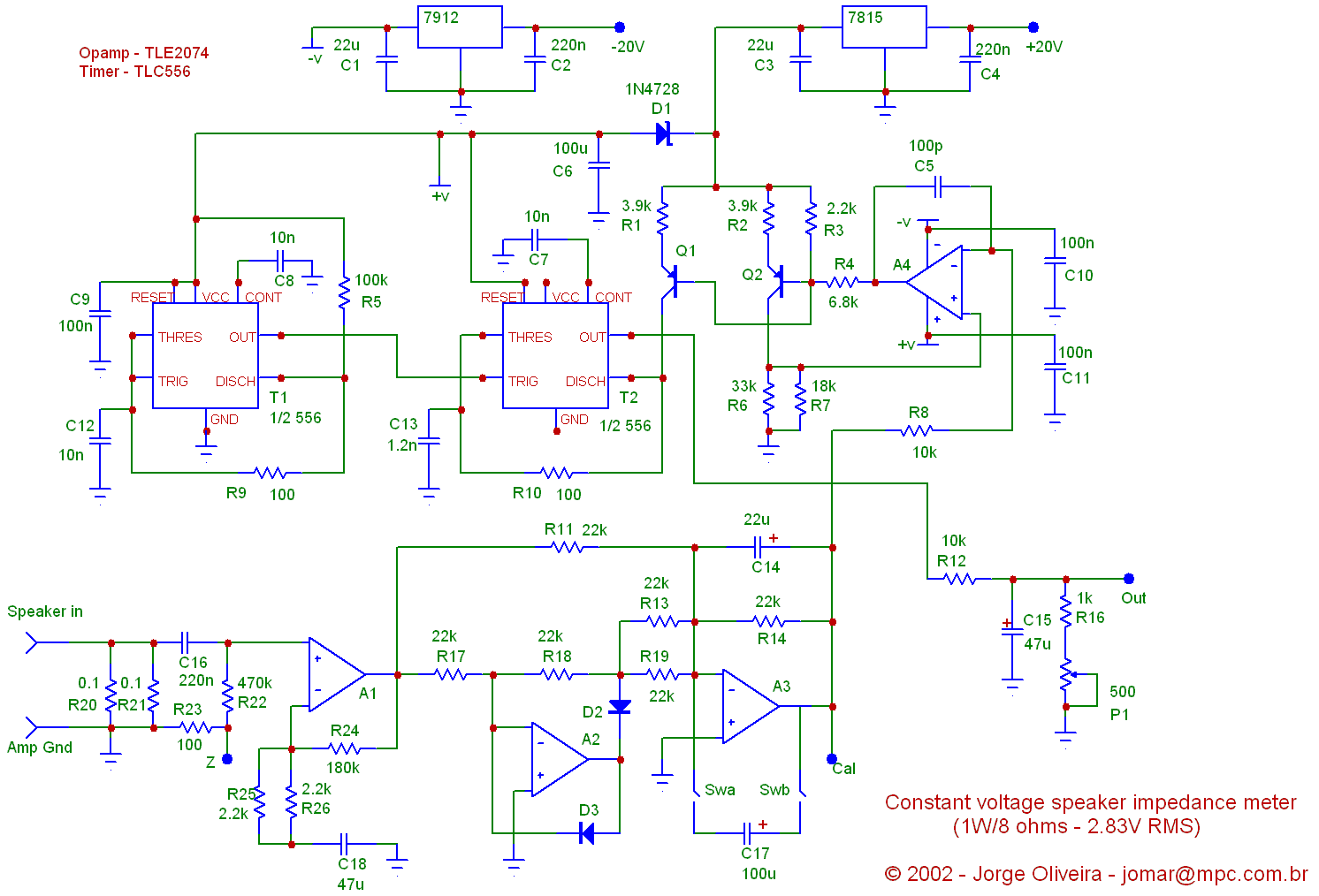
200w atx power supply circuit
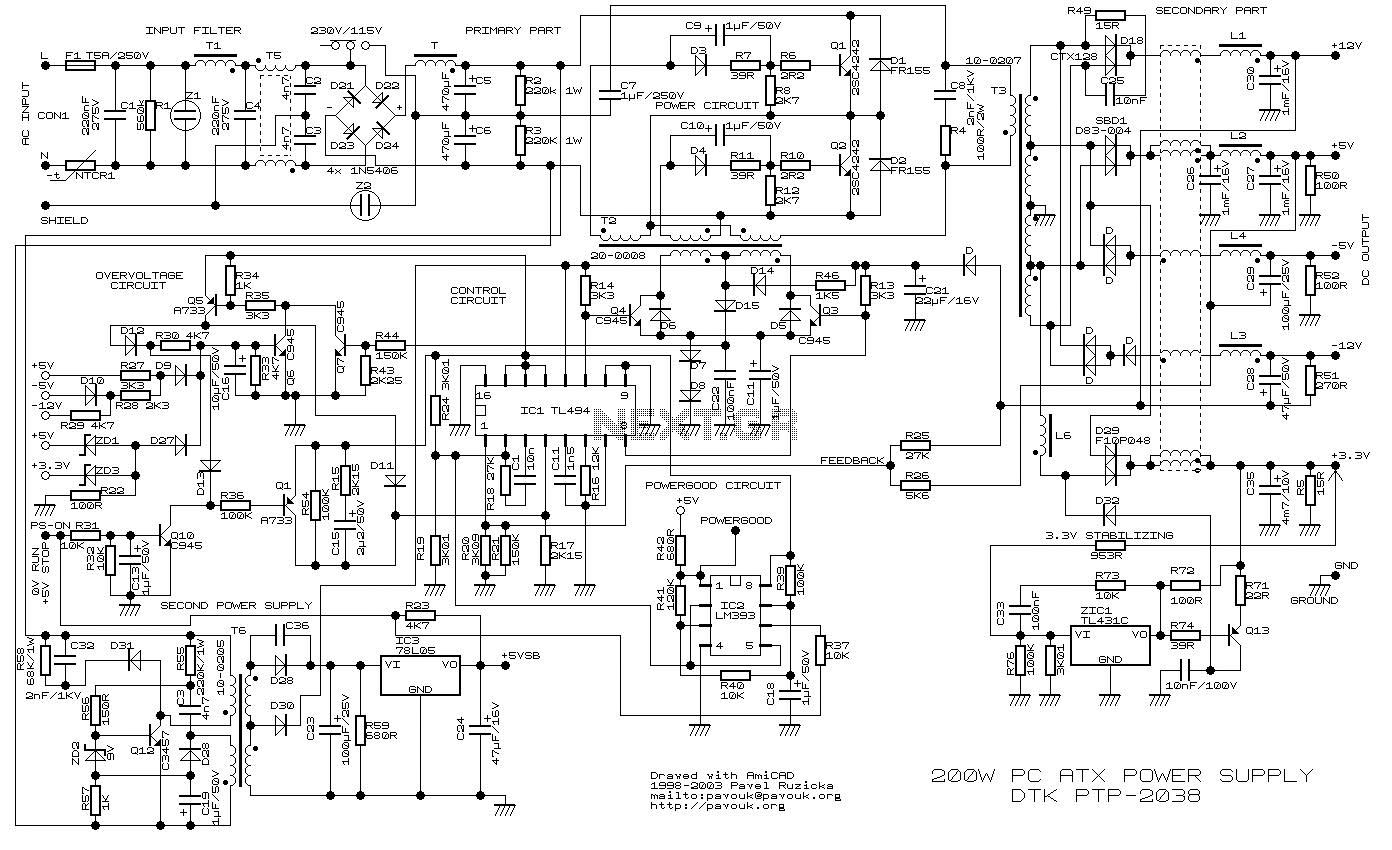
200W ATX Power Supply Circuit power supply. Visit the page for an explanation of the power supply circuit diagram. Here is a simple battery monitor circuit in which the LED continues flashing until the battery voltage is above a certain level. Transistors Q1 and Q2 are configured as an astable multivibrator circuit. This flashing battery monitor circuit can operate from a variety of voltages ranging from 6V to 12V. The voltage level at which the LED stops flashing can be set by adjusting R4. When the preset battery voltage reaches a threshold, the flashing frequency decreases, and when the voltage drops below the threshold, diode D1 turns the LED off. This is used to compensate for changes in the voltage of the base-emitter junction of Q1.
The 200W ATX power supply circuit serves as a robust source of regulated DC power, commonly utilized in computer applications. It converts the AC mains voltage to various lower DC voltages required by computer components. The circuit typically includes a transformer, rectifier, filter capacitors, and a voltage regulation stage, ensuring stable output across varying loads.
In conjunction with the power supply circuit, the battery monitor circuit provides a means to monitor battery voltage levels effectively. The astable multivibrator configuration formed by transistors Q1 and Q2 generates a square wave output, which is used to drive an LED indicator. The frequency of the LED's flashing serves as a visual cue for the battery's state.
The operational range of the battery monitor circuit, capable of functioning between 6V and 12V, allows it to be versatile for different battery types. The resistor R4 plays a critical role in setting the threshold voltage at which the LED ceases to flash. As the battery voltage rises above this threshold, the flashing frequency diminishes, indicating a healthy battery state. Conversely, when the voltage falls below this threshold, diode D1 is activated, turning the LED off, which serves as a warning for low battery conditions.
This dual-function circuit setup enhances the reliability and usability of electronic systems by providing both stable power supply and effective battery monitoring, crucial for maintaining operational efficiency in various applications.200W ATX Power Supply Circuit power supply. Go to that page to read the explanation about above power supply related circuit diagram. Here is asimple battery monitor circuitin which theLEDwillcontinueflashinguntil battery voltageis above thelevel. TransistorsQ1andQ2arewiredasan astable multivibratorcircuit . Thisflashingbatterymonitorcircuitcan operatefroma variety ofvoltagesfrom6Vto12V. Thevoltagelevelat whichanLEDstopsflashingcan be setby adjustingR4. When thea presetbatteryvoltagereachesthresholdflashingfrequencydecreasesandwhenthe voltagedrops belowthe threshold ofthe diodeD1LEDturnsOFF. This is usedtocompensate for changesinvoltage ofthe baseemitterQ1due the. 🔗 External reference
The 200W ATX power supply circuit serves as a robust source of regulated DC power, commonly utilized in computer applications. It converts the AC mains voltage to various lower DC voltages required by computer components. The circuit typically includes a transformer, rectifier, filter capacitors, and a voltage regulation stage, ensuring stable output across varying loads.
In conjunction with the power supply circuit, the battery monitor circuit provides a means to monitor battery voltage levels effectively. The astable multivibrator configuration formed by transistors Q1 and Q2 generates a square wave output, which is used to drive an LED indicator. The frequency of the LED's flashing serves as a visual cue for the battery's state.
The operational range of the battery monitor circuit, capable of functioning between 6V and 12V, allows it to be versatile for different battery types. The resistor R4 plays a critical role in setting the threshold voltage at which the LED ceases to flash. As the battery voltage rises above this threshold, the flashing frequency diminishes, indicating a healthy battery state. Conversely, when the voltage falls below this threshold, diode D1 is activated, turning the LED off, which serves as a warning for low battery conditions.
This dual-function circuit setup enhances the reliability and usability of electronic systems by providing both stable power supply and effective battery monitoring, crucial for maintaining operational efficiency in various applications.200W ATX Power Supply Circuit power supply. Go to that page to read the explanation about above power supply related circuit diagram. Here is asimple battery monitor circuitin which theLEDwillcontinueflashinguntil battery voltageis above thelevel. TransistorsQ1andQ2arewiredasan astable multivibratorcircuit . Thisflashingbatterymonitorcircuitcan operatefroma variety ofvoltagesfrom6Vto12V. Thevoltagelevelat whichanLEDstopsflashingcan be setby adjustingR4. When thea presetbatteryvoltagereachesthresholdflashingfrequencydecreasesandwhenthe voltagedrops belowthe threshold ofthe diodeD1LEDturnsOFF. This is usedtocompensate for changesinvoltage ofthe baseemitterQ1due the. 🔗 External reference
